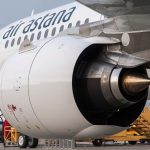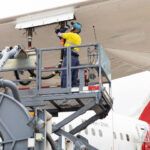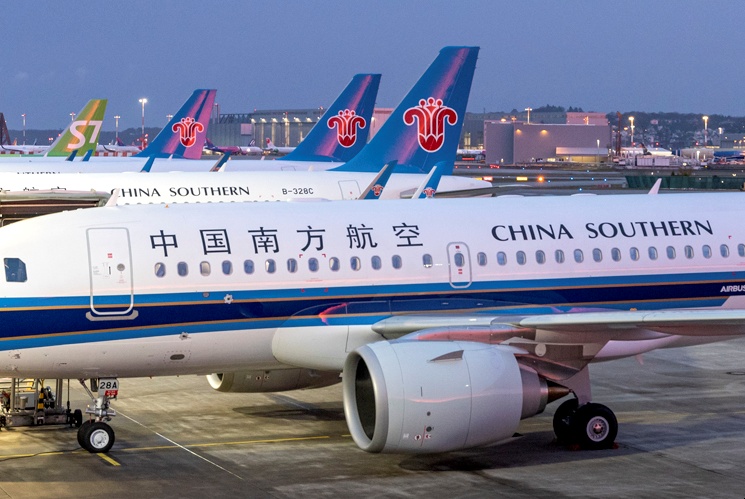Despite growing momentum behind China’s national carbon market expansion, the aviation sector remains unlikely to be included in the near term. While recent policy developments signal a clear trajectory toward broader sectoral coverage, aviation faces persistent structural, technical and regulatory hurdles that limit its readiness for integration. David Ma argues that aviation’s inclusion will require more than political will – it demands robust MRV infrastructure, stable emissions baselines and alignment with national priorities. In the meantime, voluntary offset mechanisms and regional pilot programmes offer a transitional pathway, but they are not substitutes for full ETS participation. Understanding these constraints is essential for shaping realistic expectations and strategic planning within the aviation industry.
As global carbon market mechanisms continue to evolve, China’s national emissions trading system is accelerating both sectoral expansion and institutional refinement. On August 25, the Chinese government released its new policy directive, Opinions on Promoting Green and Low-Carbon Transition and Strengthening the National Carbon Market (“the Opinions”), which outlines a clear roadmap for the medium- and long-term development of the ETS. While market expansion is now a confirmed priority, aviation remains unlikely to be included in the national ETS in the short term due to regulatory design and sectoral positioning.
The Opinions state that by 2027, China’s ETS should “basically cover major emitting sectors in the industrial domain.” This language signals a clear prioritisation: industrial sectors will be the first to enter, while transport-related sectors – including aviation – are not part of the near-term inclusion plan. Although aviation has mitigation potential, its emissions profile, data complexity and regulatory challenges have kept it off the priority list.
Aviation plays a significant role in global climate governance. ICAO’s CORSIA scheme already requires airlines to offset international flight emissions through carbon credits. However, integrating aviation into China’s national ETS faces several hurdles:
• Data quality and MRV infrastructure – Aviation emissions accounting involves complex variables such as flight segmentation, fuel burn and load factors. Accurate monitoring requires access to onboard data systems, flight logs and fuelling records, along with a dedicated monitoring, reporting and verification (MRV) framework. While the Opinions encourage monthly data archiving and automated monitoring, the only national-level aviation MRV guideline – published in 2015 – has not been updated. Moreover, China’s Ministry of Ecology and Environment has mandated emissions reporting only for airport terminals, not airline operations, leaving a major gap in coverage.
• Sector growth and ETS design – The Opinions emphasise sectoral inclusion based on development stage, mitigation contribution and data quality. The four sectors currently covered – power, steel, cement and aluminium – have largely peaked in emissions and are structurally suited for ETS integration. In contrast, China’s aviation sector is still expanding. According to the Civil Aviation Administration of China’s 2022 submission to ICAO, commercial aviation is expected to achieve carbon-neutral growth only by 2035. This implies rising emissions and unstable baselines, making ETS inclusion premature. For now, policy favours voluntary mechanisms like the China Certified Emission Reduction (CCER) programme over mandatory ETS participation.
• Low emissions share and limited priority – Aviation accounts for roughly 2% of China’s total GHG emissions, far below industrial sectors. In the early stages of ETS expansion, regulatory capacity is focused on high-emitting, data-rich sectors to maximise mitigation impact. From a cost-effectiveness standpoint, aviation does not present an urgent case for national inclusion. Instead, promoting high-quality voluntary offset projects and scaling sustainable aviation fuel deployment aligns better with current policy priorities.
Local pilots testing aviation integration
Despite national-level exclusion, several regional ETS pilots have begun experimenting with aviation inclusion. Guangdong’s 2024 allocation plan includes aviation enterprises, categorised by transport type and service model. Full-service carriers receive allowances via a benchmark method based on aircraft type and transport turnover, while other carriers use historical intensity metrics.
Shanghai has pioneered aviation MRV methodology and applies the historical intensity method for allowance allocation. The baseline is calculated using 2018, 2019 and 2023 emissions data, multiplied by verified 2024 business volume. Allowances are primarily distributed for free, typically at 99-99.5%, with performance-based bonuses of 0.3-0.5 percentage points. Airlines may offset up to 5% of emissions using CCER or Shanghai’s SHCERCIR1 credits. If annual operating days fall below 92, no allowances are issued; partial-year operations receive proportionate allocations. This mechanism reflects Shanghai’s precision in managing aviation emissions and incentivising performance.
Beijing has also taken steps. In late 2022, it released its own aviation accounting standard and, by May 2025, formally included 11 aviation transport enterprises in its ETS registry.
However, these local initiatives remain exploratory. The Opinions clearly state that national ETS expansion will prioritise industrial sectors. While regional pilots offer valuable insights, they are not sufficient to trigger national-level aviation inclusion in the short term.
China’s ETS expansion follows a deliberate path: “industry first, system maturity, unified inclusion.” Until allowance allocation, MRV systems and compliance mechanisms are fully stabilised across industrial sectors, complex sectors like aviation will remain outside the national ETS.
In the longer term, as MRV infrastructure improves and regulatory capacity grows, aviation may gradually be integrated into the national carbon market. In the meantime, the voluntary offset market – especially CCER – can serve as a transitional mechanism, enabling airlines to manage emissions and meet international obligations.
Under the “dual-carbon” goals and global climate cooperation frameworks, aviation’s inclusion in the national ETS may not be imminent, but its strategic relevance is undeniable. By leveraging local pilot experience, advancing methodological standards and strengthening data oversight, China can lay the groundwork for aviation’s eventual integration – and a broader breakthrough in transport-sector carbon governance.
Photo: Airbus















More News & Features
News Roundup October 2025
UK government starts new consultation on SAF revenue certainty mechanism
African Development Bank and Japanese industrialist unite to explore SAF production in Africa
Cirium analysis challenges assumptions between aviation growth and environmental impact
LanzaJet and KMG agree to progress SAF production project in Kazakhstan
SkyNRG says e-SAF and carbon removals should not be competing strategies for aviation decarbonisation